The bees were actively going in and out near an entrance of a second building (guest house) behind the main house, currently being used for storage. We started looking to see where the colony was actually located as soon as I arrived there and found that it was not in the wall cavity as I had initially supposed, but was obviously under the floor. After a break for lunch, we were joined by a couple of Mori san’s friends who helped us open the sliding doors, remove a large tatami mat, and then we pried up some floor boards and located the nest. It was about a foot and a half in diameter, and there were lots and lots of bees. Many bees were out foraging at the time, but the nest still had a lot of bees.
I smoked them with my smoker to calm them and then started removing comb. I put the brood comb into frames, held in place with rubber bands, and put the honey comb into bowls. Everyone who helped got some honey to take home. The removal went smoothly. I cut the comb off of the floor boards with my hive tool. I put two frames of brood into each of three hive boxes (Langstroth style, but made with dimensions for the Japanese honeybee, and put sugar syrup I had previously prepared into the in-hive feeders. With my gloved hands, I gently took handfuls of bees and put them into each hive box. The front entrances had been previously blocked using small strips of metal window screen so the bees could not get out after the lids were placed on the boxes.
Yamaguchi san in the Kyushu University Entomology Department had previously prepared cardboard boxes with a screened opening in the side of each box for air circulation, and packing to put around the hive boxes so they would not shift around during shipping. He really did an excellent job. He shipped them to the house in Mie Prefecture ahead of time so they were waiting for me when I got there.
I packed the hives into the shipping boxes the next morning and shipped them back to the University in Kyushu C.O.D. refrigerated. They all arrived without mishap, and as far as I could tell with almost no mortality. The boxes arrived Thursday morning and I returned at around noon that same day and installed them in a couple of shaded places where I had decided to place them. By Friday morning when I checked on them, there was normal entrance activity in two of the three boxes and none in one of them. The bees in that box may have left that box and joined those in another box. It looks like I will get 2 hives from this removal. I am pleased that it went so well. During this trip I was also able to visit my wife’s sister, Junko Okada, who lives with her husband, Takashi, in Nagoya.



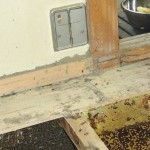

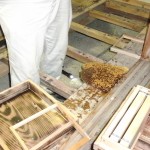

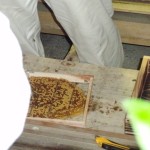
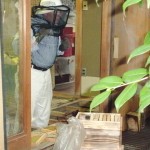


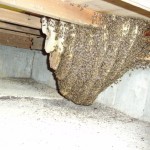
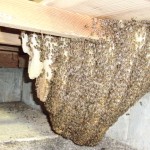
Wonderful story, thanks for sharing!
Regarding: “but made with dimensions for the Japanese honeybee”
Is there any information available on the sizes of the Japanese queen, workers, drone and therefore the required bee space?
Any info would be appreciated.